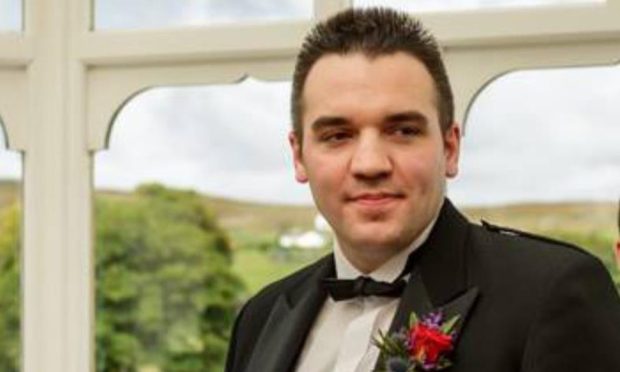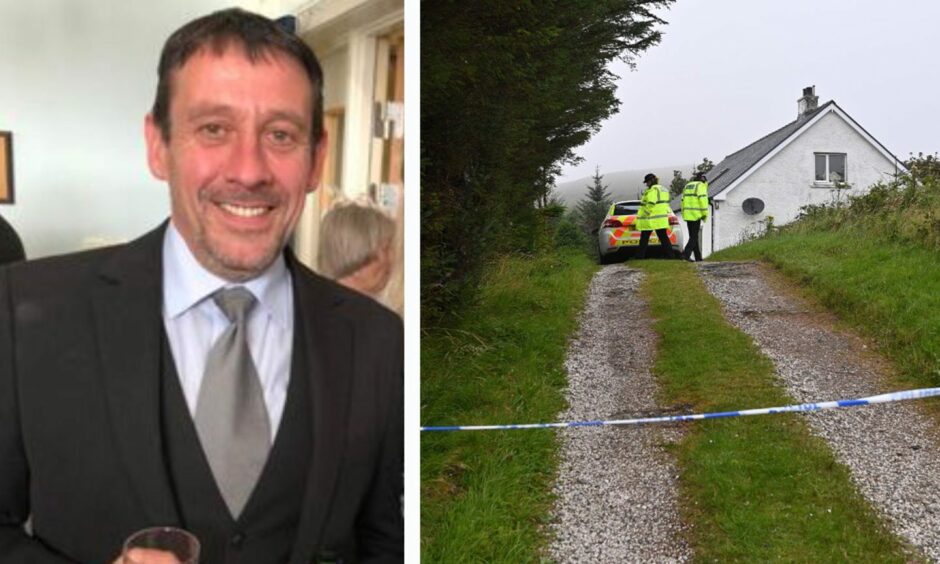The lawyer defending a Skye man accused of murdering his brother-in-law and attempting to murder three other people, including his wife today called the case “a genuine tragedy”.
Donald Findlay KC said the series of incidents involving his client, Finlay MacDonald, were “catastrophic” and unlike anything he has seen in his 50-year legal career.
In his closing speech to the jury at the High Court in Edinburgh, Mr Findlay also highlighted MacDonald’s autism, saying he had received “no help” for the condition.
MacDonald, 41, has denied murdering his brother-in-law John MacKinnon at his home at Teangue, on the Isle of Skye, on August 10 2022, by firing a shotgun at him.
The marine engineer has lodged a special defence to the murder charge maintaining at the time his ability to determine or control his actions was substantially impaired by abnormality of mind.
He has also denied attempting to murder his wife Rowena, 34, on the same day at the family home at Tarskavaig, on Skye, by repeatedly stabbing her.
He has further denied attempting to murder retired osteopath John MacKenzie and his wife Fay, both 65, at their home in the village of Dornie, in Ross-shire, on the same date by discharging a shotgun at them.
Mr Findlay told the jury: “There is a genuine tragedy in this case. It is a case the like of which I do not think I have ever seen in nearly 50 years of being here.
“It is a tragedy because so many lives have been affected to such a profound extent by the events of August 10 in 2022.”
The senior counsel continued: “Whatever else you have thought over these many days I would be astonished if you were not deeply affected by much of what you have seen and heard.”
‘Something catastrophic has happened’
He said a man has lost his life, a family torn apart and others injured in the events that led to the court case.
Mr Findlay said his client has never been convicted of any crime and yet on one single day he killed another human being, put his wife’s life at risk and others were injured.
He said: “Something catastrophic has happened somewhere.”
He argued that the prosecution was doing everything it possibly could to make jurors think that whether MacDonald had autism or otherwise was irrelevant.
Mr Findlay said there was a subplot that autism did not count, but added: “But of course it does. The one thing everybody is agreed upon is that from birth he suffered from autism spectrum disorder.
“He was born with it and from his childhood he has had no practical assistance whatsoever.
“He has not had the support that he might have had if that had been diagnosed. It is a simple fact that he received no help.” he told the court.
Accused: ‘I wish I could turn back the clock’
The court heard that MacDonald was only diagnosed with autism following the events that led to him being charged.
Advocate depute Liam Ewing KC previously told jurors that as regards the charge of attempted murder of his wife there was “absolutely no basis” for finding there was provocation because of the discovery of sexual infidelity.
He said MacDonald had found some “mildly flirty texts” on his wife’s phone between her and a work colleague and added: “But there was nothing in those texts which suggested an ongoing sexual relationship.”
Mr Ewing said: “There is no evidence which suggests that the accused lost control because he discovered his wife was having an affair.”
He pointed out that MacDonald told police: “I wish I could turn back the clock. I just feel like if she had not physically started fighting with me it would never have happened.”
The trial before judge Lady Drummond continues.

